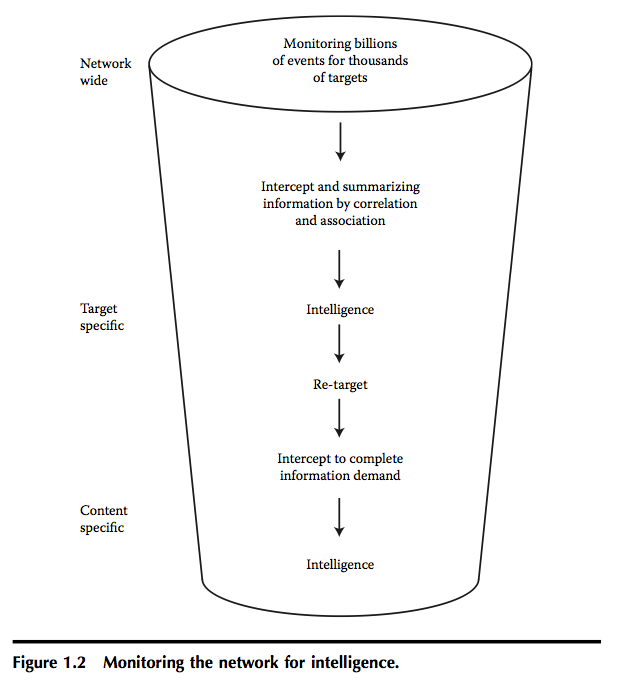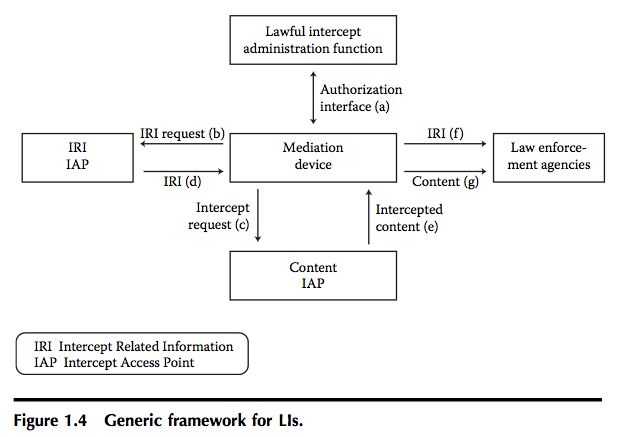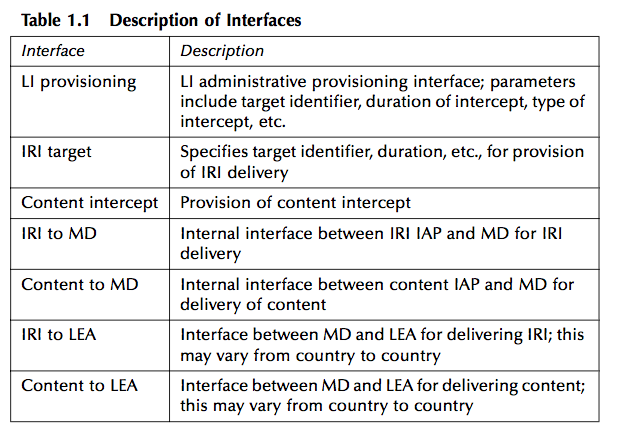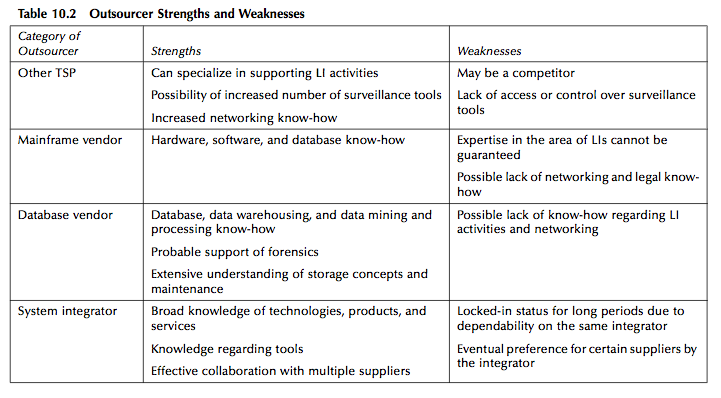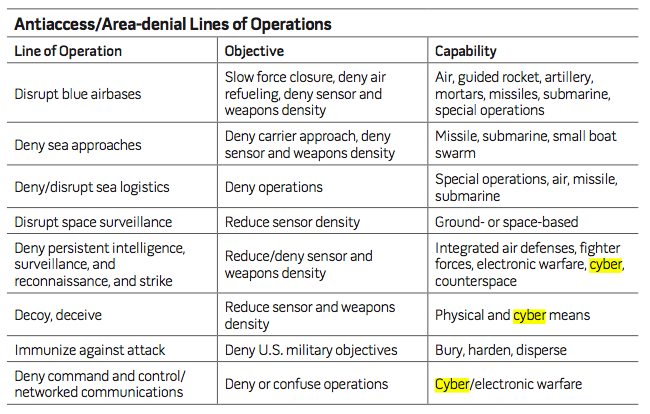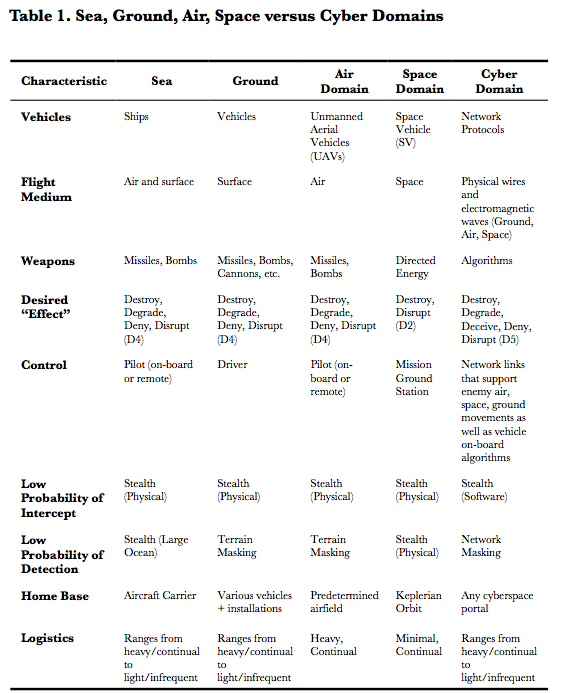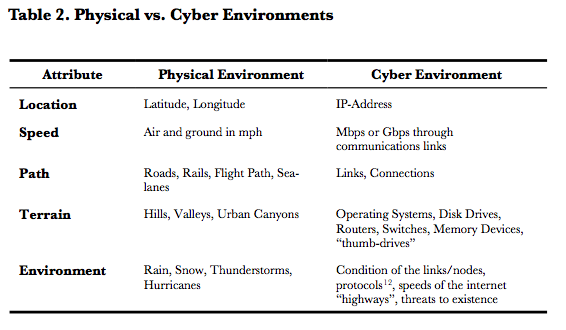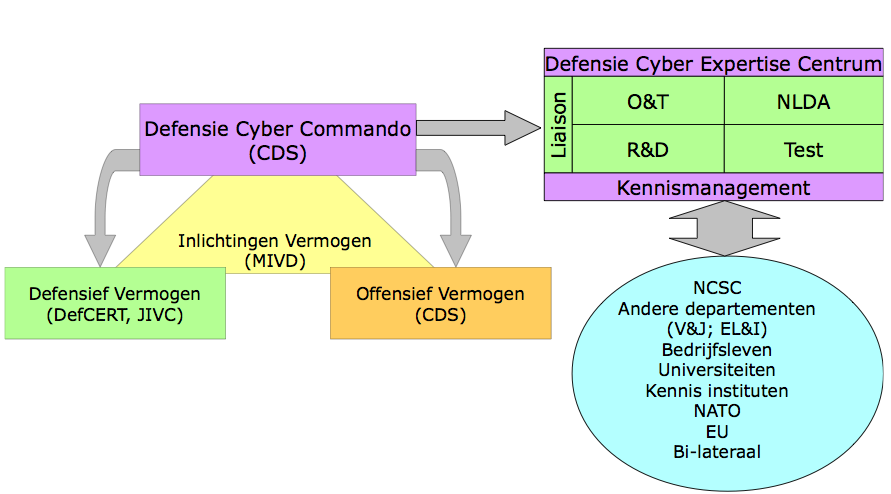UPDATE 2017-04-17: perhaps there’s some renewed relevance to having the Chinese text below translated: Anti-Espionage: A New Mass Line Campaign in China? Anti-espionage appears to be the most important theme of this year’s “National Security Education Day.” (The Diplomat)
UPDATE 2017-04-10: not specifically related to the text below, but still relevant: a new approach to counterintelligence – China reportedly offers cash rewards between USD 1,500 and USD 72,400 to encourage residents in Beijing to provide information on infiltration, subversion and theft of information by foreign spies inside the country. The rewards depends on the importance of the reported information.
Does anyone understand Chinese more reliably than Google Translate does and care to translate the 9000-word “China Folk Counterespionage Manual” quoted below? It quite an effort, but I’d be happy to return the favor, for instance by carrying out a Dutch to English translation and/or by making a donation to a charity of your choice. The manual was posted in 2008 on a Chinese internet forum. Didi Kirsten Tatlow blogs that it is a manual on how to recognize foreign spies. China recently adopted new counterespionage legislation; this is the context/frame in which said report discusses this manual. The Chinese populist news paper Global Times spent attention on this topic on September 18th 2014:
Be wary of espionage trap surrounding us
(Global Times) 08:37, September 18, 2014According to foreign media outlets, Ma Jisheng, who served as Chinese ambassador to Iceland, was allegedly arrested by the Ministry of State Security earlier this year on suspicion of passing intelligence to Japan. In recent years, we have frequently witnessed vicious incidents where top Chinese diplomats, military officers and senior research fellows of think tanks have been involved in espionage and selling intelligence. If Ma is confirmed to be involved in this case, that will be startling news.
China has become one of the most powerful strategic competitors with incredible strength, rapid development and a self-contained decision-making mechanism, which has made it a key target of the world’s major intelligence agencies. Meanwhile, given the relatively low vigilance in Chinese society, authorities have failed to effectively convey their judgments and understandings to the public. Among the high-risk groups easily eyed by overseas intelligence services, some lack both sufficient knowledge in this regard and a capacity of discernment.
There have been no contemporary spy dramas made in China for a long time, as directors will find it hard to acquire materials, and even if they do, such screenplays would not gain approval. Therefore literary creation in this area seems like a forbidden zone, despite continuous information warfare.
Plus, there are few news stories involving espionage and Chinese officials. A number of major cases that startled the Chinese elite were not released to the public through the media. In actuality, reporting such incidents will educate many people by letting them know how close those manipulators of overseas intelligence agencies are to us.
Officials and scholars accused of espionage did not fall into the trap overnight. Most of them developed distorted values and indulged themselves, hankering after cash and a life of luxury, so they were easily targeted by foreign intelligence services. They were treated to dinners and offered gifts, which gradually induced them to sell national intelligence.
Owing to a lack of public education in this field, ordinary Chinese have a quite shallow understanding of espionage.
Some people feel that everything is secret and become panicked about contact with foreigners, while others are adverse to rules on classified information and regard certain necessary measures as formalism.
Although information warfare is a common phenomenon around the world and almost every big power has once been mired in espionage cases, China has obviously suffered more losses in recent years. Ma Jisheng is not the first top diplomat caught for spying.
With advanced technologies in the modern era, there is an increasing possibility that those selling intelligence will be caught. And all the potential high-risk groups should recognize this point, which may help them refrain from selling information when they are about to cross the red line.
If it is confirmed that Ma has been caught, we hope that his story will one day appear on media to serve as a warning for others.
Globaltimes.cn also published the following infographic:
Here is the manual (NEEDED: full translation Chinese->English):
中国防间谍不完全手册:里面的很多内容不光对留学生有用,对国内的网友来说也是非常有用的。一、间谍做什么?
二、谁会成为反华势力的间谍?
三、现实生活中策反/造谣类间谍的表现
四、网络上策反/造谣类间谍的表现
五、借信仰之名,行策反之实的假基督徒间谍(省略)
六、初级间谍拉人入伙的最初识别(省略)
七、总结情报工作无孔不入,情报人员其实就出没在我们的周围,他们看起来绝对不像是JamesBond那么酷,他们其实就和你的朋友没什么两样——说不定你的朋友 中就有情报人员。一个好的情报人员,一定是低调的,一定是能和群众打成一片的,一定是让你甚至连想都不会往这方面想的——一句话,扔到人堆里你绝对找不出 来的。而这些普普通通的情报人员,却在为各自的目的,为各个政治集团做着默默或者张扬的工作。一、间谍做什么?狭义的情报人员是服务于某政治集团的一些比较特殊的人员,他们的工作性质、工作内容也各不相同。通常的“间谍”一词所指的,只是其中的一部分。下面,我们看一看一般我们在国内外能够遇到的情报人员,一般都有哪些任务。1、刺探。这是情报人员最古老的工作之一。这项工作的目的是主动刺探敌方军情或者政治秘密,为我方采取战术或者战略反制措施提供决策依据。比较常见的是在军事基地附近拍照的间谍,以及发展第五纵队从敌方军政机构里面获取涉密信息的间谍。2、分析。如果说刺探是主动出击收集信息,那么分析则是被动地收集信息。例如专门分析报刊杂志上面政经信息的驻外文官(情报分析员),以及坐在某军工研究所附近餐馆 吃饭的常客(听研究人员吃饭时无意透露的最新武器研制信息)。其实不一定要专业的情报人员才能做这样的事情,许多平民也有这方面的惊人才能,例如在希特勒 闪击波兰前几个月,德国的一个平民就根据几年来收集到的公开报刊杂志分析出了希特勒闪击波兰的全部作战计划,连时间、编制、战役细节都推测得八九不离十。 他把分析结果出版,引起了希特勒的震惊与恼羞成怒,于是不久便派盖世太保将其暗杀。希特勒不得不重新调整战役部署,然而泄漏过多,难以完全达到战争的突然 性。幸而波兰国内的耶和华见证人(邪教)多方阻挠波兰人民抵抗,希特勒才没有在闪击波兰的过程中遇到太大的麻烦。3、窃取。间谍古已有之的任务。一般是使用技术手段获取敌方的技术图纸、数据、图片、录音等秘密信息,以及偷窃对方的某些技术装置(如特种合金碎片、芯片、导弹制导装置等部件,甚至是整架战斗机)。4、策反。这也是情报人员最古老的任务之一。顾名思义,策反就是通过各种心理战手段,将敌方人员从思想上转化为我方人员,从而削弱敌方力量,增强我方力量。被策反的 敌方人员,往往可以继续发展成我方间谍,或为我方提供特殊的技术能力,以使得情报工作效果最大化。这也是“和平演变”的核心所在,乃“兵不血刃”之高招。5、造谣。由于人民从广泛意义上比较缺乏专门的知识和辨识能力,容易倾向于相信一些他们所希望相信的东西,因此情报人员用造谣的方法,可以将人民群众拉拢支持己方政 治集团,反对敌方政治集团。以削弱敌方政治集团的民意基础,给敌方政治集团的执政带来很大困难,造成敌方政权管辖范围内的动荡,等等。同样,造谣也可以用 于攻击敌方个人,以诋毁其声誉。6、传递。这是一类比较特殊的情报人员,他们不单独行动,他们的任务是将信息情报在前线情报人员和后方总部之间进行有效而秘密的传递。二、谁会成为反华势力的间谍?中国人所要面对的,基本上全是反华势力的间谍了。因此,我们以下的讨论将仅仅局限于反华势力。西方每个国家都有不同的反华势力,他们各有不同,其中美国反华势力流派最多、经验最老到、势力也最大。在西欧(原北约成员国),反华势力的基本做法都和美国相去不多,因此下面仅讨论美国反华势力。美国反华势力主要可分为政府级别和民间级别.其中民间级别的包括臭名昭著的轮子、民运等,由于其自身的问题而不得势。然而政府主导的情报工作,却是力度很大、成效颇丰的。美国的情报机构,对外主要是CIA,对内主要是FBI。其中CIA尤其注重在留学生中进行情报工作。 经过几十年的实践总结,CIA已经形成了一整套招募发展外国间谍的行之有效的方法。概括起来可以用4个字母表示:MICE。(老鼠的复数?)M= money,即金钱。这个其实没什么好说的,许多人见钱眼开,给奶便是娘。I= ideology,意识形态。这个在冷战时期非常管用,那些极端厌恶共产党的社会主义路线的人,在本国受挫后,常常在反华势力“自由”、“民主”的旗号的煽动之下,主动投靠反华势力,充当其走狗。C即个人表现。比方说,CIA会跟你说,你给他们当间谍,你就可以成为007那样受到万人追捧的明星;你给他们当间谍,你就可以实现人生的最高价值,等等。E即道德压力,就是常见的利用美色或者经济问题来引人上钩,抓到把柄,然后以此来要挟人为自己当间谍。
CIA的这个“老鼠”法,可谓屡试不爽。因此,符合这四条中任何一条很显著的人,都很有可能被美国反华势力发展成为间谍。比方说:
见钱眼开者,削尖脑袋也要享受资本主义奢侈糜烂生活的人。
那些如平可夫这种“对共产主义毫无兴趣”,对共产党恨之入骨的反共反华者。
那些个人成就动机极其强烈,尤其是希望得到万众瞩目的人。
还有就是那些贪官污吏啦,以及个人生活作风有问题的人。
由此,如果你发现有人对政治特别感兴趣,其政治倾向为反共反华,又符合上面四条中的任何一条(甚至几条),就要高度注意了。这样的人很可能不是自己头脑发热,不是自己真的要愤世嫉俗,而是为了反华集团而卖命。
三、现实生活中策反/造谣类间谍的表现
在现实生活中,与我们这些学生接触较多的反华势力的间谍,通常以学生的身份出现,这样对于我们这些普通的学生而言,无疑具有更大的亲和力,也可以避免我们的警惕与防范。
1、台湾中情局派出的“职业学生”
根据中国国家安全局的数据,在欧美的台湾留学生中,每5个人中就有一个是由台湾中情局直接进行经济支持的策反类间谍,这是台湾政府的内部规定。于是在台湾 学生中间就有了这么一个名词:职业学生。这些学生以在大学里面学习为职业,他们只要继续读书,就可以从中情局拿到不菲的薪水(当然通常来说都是不会让朋友 知道的)。他们的任务只有两个:1、策反大陆学生;2、防止台湾学生被大陆人策反。中情局对这些“职业学生”的要求,就是尽可能拖延毕业、多多组织台湾学 生的活动、多多接触大陆人。
根据这些特点,我们可以总结出这些台湾的策反类间谍的识别方法:
(1)持鲜明反共立场,有可能持台独立场,经常表示政治立场
(2)长期不毕业
(3)不好好学习,社会活动多,常组织社会活动
(4)故意拖延毕业时间
(5)频繁与台湾人/大陆人接触
(6)不需要打工,经济条件却很宽裕
(7)他们的家人不大出国(因为被政府看着做“人质”防止间谍叛逃。起码以前是这样,不知道现在是否在“民主诉求”之下还有这一条)
其中,6和7这两条若不用间谍来解释,就是互相矛盾的。若家庭经济条件好,不需要打工,则其家人一般来说出过探亲旅游的倾向性很高;若家庭经济条件不好,家人没钱出国旅游,则一定需要打工才能生存。这是台湾“职业学生”的一大软肋所在。
要特别注意的一点是,台湾中情局所豢养的这些间谍,并不一定都是台湾人,也有许多是被策反了的大陆学生,他们也基本符合上面的1-6条。
有些间谍因为某些原因洗手不干了,这个时候就会被中情局威胁。当然,实际上一般情况下中情局不可能对他们的家人做出多么不利的事情,顶多就是以后办理出国 手续的时候卡一下。不过,中情局停掉工资是肯定的。我还真的看到过有的台湾“职业学生”洗手不干之后的悲惨日子。一般来说这样的间谍会突然遇到非常严重的 经济困难(目前尚不清楚中情局是否会阻止他们的台湾家人给他们汇款),于是得外出打工等。在学生签证满了10年之后,无法继续延签(许多欧洲国家规定学生 签证最多只能给10年)——如果这个间谍工作成效比较好的话,中情局会想办法让他继续服务的,签证便也就不成问题。如果发现你的朋友中有这样的情况,要特 别的当心。
2、为美国或欧洲反华势力工作的学生间谍。
姜还是老的辣,美国的情报工作历史悠久、经验丰富,比台湾的中情局强不知道多少倍。因此,想要有那么几条简单的比较统一的判断标准,也非常的困难,甚而至于比较精确的推断都非常不容易。我们只能根据长期情报工作所总结出来的经验规律,从侧面大致来推断。
(1)愤世嫉俗。
这一点是肯定的,他们如果想要开展社会政治策反工作,反共反华,一定要愤世嫉俗,否则便不可能造成社会影响力。上面说过,他们具体的表现就是一味攻击谩骂中国和共产党而无意提出理性的解决方案,也无意投身于建设祖国的事业中。
(2)崇美恐美情绪明显。
任何事情,美国的观点总是正确的,中国相类似的事情,就算没有问题也要鸡蛋里面挑骨头出来批判。
(3) 经济状况。
大陆学生一般而言都比较穷(那些贪官子弟当然另当别论),在国外读书一般都必须靠奖学金或者打工过活。如果你发现你的某个朋友的支出明显高于他的明面上的 收入,就得小心了。情报部门所给的经济资助,一般相当丰厚,每月少则几百,多则几千美元。而且,如果你发现你的朋友在收入一事上对不同的人有不同的说法, 也需要特别小心。
(4)社交圈子相对独立。
情报部门一般来说也会要求基层间谍与他的朋友保持一定距离,即使有几个表面上的“密友”,也只是用于掩护的。仔细观察可以发现,这些间谍与他们的“密友” 之间仍然保持着相当大的距离,比方说不轻易邀请密友到家中做客,几乎不参加密友所组织的较大型的活动,也不带密友和他的其他社交圈子中间的朋友一同参加活 动、彼此认识。总而言之,就是他试图保持几个社交圈子之间的隔离性。
(5)比较典型的美式逻辑:“深刻的偏激优于平庸的全面”。
美国历史上在这种偏激的哲学思想之下,诞生出了一代又一代的偏激大师,如佛洛伊德、布热斯津等。然而既然是偏激,就很不全面,虽然言语非常的震撼,却绝对不代表真理。
(6)言论与其专业训练明显不符。
通常而言,文科生比理科生容易策反,工科学生被策反的不确定性很大(视专业不同有很大的区别)。
在理科生中,有较强不确定性、今后在国外工作前景较为乐观(例如生物、化学)的学生,策反起来,比要求严谨逻辑和事实观察、今后工作前景不那么乐观的学生(例如数学、物理),相对要容易。
如果你发现一个学数学或物理的高才生居然在言论中逻辑性很差,不注重事实,盲目崇美恐美,这就与他的专业训练背景相抵触,其背后必有隐情。这样也就可以大致对某些人进行推断。
(7) 原创观点明显偏少,大量引用他人的观点与论证方法,甚至语言形式。
这些被策反的间谍所说的言论,虽然具体阐释上面可以自己发挥,但基本论点和论证形式一般来说都由上家指导甚至直接确定。其实这一点本不是情报机构的首创, 而是古老的邪教的惯用手段,就是由总部来培训邪教传教士,教他们如何歪曲宗教经典,用似是而非的诡辩方法来赢得人心。至今,我们还可以从耶和华见证人、东 方闪电和**功那里,明显地看到这种策略。把它套用到政治观点上面,由于出国留学的学生总体认知水平比较高,如果关心政治,应该有自己的观点(要么就是完 全不关心政治,这种人一般来说也很少会谈论政治),因此,自己的观点明显偏少,却大量引用他人的观点与论证方法,甚至连具体的语言形式都似曾相识,这就是 比较明显的受上家操控的标志。比较典型的语言特征例如以柴玲为代表的“民运”式,以**等人为代表的“FL功”式,等等。
(8)刻意歪曲中国的事实,将特定历史的事件反复拿出来以孤立的方法进行曲解。
现在中国的总体情况是令人乐观的,虽有争论之处,却正在稳步改进过程中。然而反华分子们唯恐中国不乱,唯恐中国发展,即便现在抓不到什么,也要刻意歪曲事实找事情来批判。
例如饿死人问题,及强调89年天安门有大屠杀(连当年民运四君子之一的侯德健都站出来澄清清场的时候根本就没有屠杀),说现在共产党仍然在迫害基督徒(事 实上90年代以后共产党中央政府就一直没有与基督徒为敌,反而在逐步放松对宗教的管制,也在试图发挥基督教在国家生活中的重要作用,见胡锦涛温家宝的公开 讲话),等等。
他们把一些特定的历史环境之下的事情孤立起来,高举某些反对共产党、又被共产党打压的人,而不管这些人自己有什么问题,就把这些人当作是“(反共)义 士”,例如解放之初一些无政府主义、自由主义、宗教极端主义的人士被当成右派打击,就被反华势力抓住当作把柄,把这些无政府主义者当成反共义士大家抬举, 全然无视当时的情况,以及美国当年也在大力打击无政府主义者的历史。
(9)片面反战,主张中国应该解除武装。
其实这是美国政府从朝鲜战争到越南战争所吃的最大的苦头。如果不是国内反战浪潮过于猛烈,朝鲜战争美国如果在李奇微将军的带领下以范弗利特弹药量继续战斗,历史很有可能改写;越南战争也是因为美国政府顶不住国内的反战压力,才被迫撤军。
然而美国政府聪明地发现,这片面反战的力量,却是瓦解敌国抵抗意志的良方。其实片面反战并不是美国人民的首创,著名的邪教耶和华见证人就是极力强调片面反 战的,他们认为一切战争都是不好的,敌人打过来了,我们也只能束手就擒,任人宰割。他们不仅自己不抵抗,还想方设法地阻挠其他的人民抵抗。二战时原东欧地 区的快速陷落,少不了耶和华见证人的“贡献”。
这些“功绩”至今仍然记录在这个邪教组织所定期发行的杂志《守望台》上。因此美国政府在1990年的海湾战争、2003年的伊拉克战争中,下了很大力气去 打击国内的反战人士(许多被监禁、被殴打,甚至被逼迫公开承认反人民的罪行)。然而在美国国外,他们却大力推行片面反战的观点,并加上“中国威胁论”,认 为中国有核武器、有先进的战机军舰就是地区和平的威胁。典型的“只许州官放火,不许百姓点灯”。
(10)偷偷摸摸进行改名改址活动
如把人民解放军改为国民军,人民军队改为国家军队,人民大会堂改为国民会议堂.
借各种理由,把首都迁往他处,把开国元勋人民领袖纪念堂迁往什么什么地方.
三八国际妇女节/五一国际劳动节/六一国际儿童节都要改.
等等这些,无不暗藏”颜色革命”动机.
以上当然只是中美在长期的情报斗争中总结出来的一些经验规律。美国毕竟经验老到,因此单独一个方面拿出来看,问题都不是很大,都有其他的方法可以解释。但是,如果一个人同时具有上面许多点特征,他是美国反华势力的间谍的可能性就非常大了。
四、网络上策反/造谣类间谍的表现
现如今,网络成为年轻一代主要的信息传播与获取渠道。反华势力很早就注意到网络的特性,非常有利于展开策反/造谣工作,因此早在十几年前互联网刚刚普及的时候,他们就在紧锣密鼓地部署网络策反与造谣的工作。
具体说来,网络适合于策反/造谣工作的特性,可以归纳如下:
1.影响面大。
不需要耗巨资组织大型的活动,不需要耗巨资去电视台演讲,只要轻敲键盘鼠标,在网络论坛上发文章,便可以吸引世界各地数以万计的眼球。而且可以跨越国界,逃避政府的管制
2.隐蔽。
网络上,没有人知道你是一条狗。网络上都为化名,谁也不知道他真正是谁。因此,这也就给策反与散布谣言者以逃避法律追究的便利。
3.信息真假难辨。
由于网络世界没有主控机构,更没有新闻审查,真假信息鱼龙混杂,什么东西更震撼,什么东西更噱头,什么东西就能够更吸引眼球,即便它是假消息。
4.管制困难。
网络上流传的信息,很难被管制。一方面,现在国际互联网的流量非常大,要在这么大的流量之中进行实时关键词搜索本来就已经需要耗费无数台超级计算机的计算 能力了,只要在敏感关键词中加一个空格,便可轻易逃过检查。即便是超级计算机,也对大量加密的语音和图像信息难以做到有效的过滤筛查。
网络上的间谍活动,由于更加隐蔽,而且信息渠道单一,因此容易伪装得良好,更具威力。这些间谍广泛分布于中国国内国外,有大张旗鼓的,也有默默无闻的。在网络上活跃的主要有这么几种间谍:
1.刺探军政情报的间谍
这类间谍活跃在军事和国政类论坛上,为的是从网友那里套取最新的军政情报。其惯用手法为:
(1)故意诋毁贬低中国的军政实力,引来爱国人士的反击。在此过程中,间谍会故意引诱爱国人士透露一些绝密情报。
(2)故意说一些错误的信息,例如部队的番号、导弹的射程等,引起一些真正知道这些情报的人士的不满,又喜好表现自己知识渊博,于是将正确的数据说出来。
(3)展示自己收集得一些装备的照片,诱使其他网友贴出他们自己拍摄的装备、军营等照片。一张船坞的照片就可以分析出中国新建造的军舰的大致性能,以及中国是否在准备十年以内建造航母等非常重要的战术和战略信息。
2.打击人民安全感的间谍。
这类间谍通常也活跃在论坛上,他们的共同手法是用许多似是而非的东西来攻击中国军队和政府,其目的就是让人民觉得中国军队非常腐败,技术也远不如人,因此无力保家卫国。
(1)歪曲历史,以刻意贬低中国军队的形象,打击人民对军队的信任感和自豪感。最常见的例子例如抹杀中国人民志愿军抗美援朝的意义,胡说什么当时不进行抗美援朝更好,云云。
(2)以一些子虚乌有的所谓“内部数据”来证明中国的武器根本无法与美国武器相抗衡,鼓吹美国制胜论。
(3)揭露所谓的“军队内的腐败黑幕”,试图让大家相信中国军队已经非常腐败,如当年清朝军队一样,不堪一击。殊不知90年代末期以后军队大整肃,大大提高了战斗力,腐败分子被内部处理了很多,军队经商问题得到了极大的遏制。
3.以亦真亦假的谣言煽动反政府情绪的间谍
这类间谍常活动与时政、强国等类型的论坛上,主要是以亦真亦假的社会事件的“内幕”,煽动人民的反政府情绪。
这类间谍属于最隐蔽的一种,因为他们的表现和一般的愤青以及不满现实的持改良政见者不容易分开,而且信息渠道单一(仅仅通过网上的言论)。然而,专业的反 间谍人员在长期的监控中,也发现了一些迹象。虽然对于这样的间谍,即便是专业的反间谍人员也需要透过专业技侦手段才能最终确认,我们普通老百姓就更难以分 辨,然而我们可以靠着一些蛛丝马迹,有一个倾向性的判断,就不容易被他们的言论迷惑,更可以和这些间谍在现实生活中保持距离。
这些间谍,其言论内容具有[三.2.(1),(2),(5),(7),(8),(9),(10)]的特征。仅凭这些言论特征,还不足以让我们高度怀疑他是一个间谍。专门从事网络策反煽动的间谍,还有其它的一些特征。
(1)IP/MAC地址常变,但网段变动不大。
尤其在中国国内,间谍由于要在网络上保护自己,不易被技侦手段锁定,常常变换上网发帖所用的计算机。在公共场合,例如网吧、学校这样的地方,是他们活动的 好战场。如果配合一些黑客手段,在这样的公共场合即便被技侦部门跟踪,也很难抓到其人。当然在国外,由于不用担心被中国安全部门监视(其实还是有的,只是 大部分人不知道而已),在家里一直使用自己电脑的也不在少数。
(2)煞有介事地报道一些热门社会事件的“内幕消息”,夸大政府、军警的残忍,突出上访、游行、抗议者被抓、被打、被抄家、被酷刑折磨等悲惨遭遇,突出在中国生活的胆战心惊。
对引起这样社会事件的复杂背景、历史等仅作非常简略的偏向性介绍,从不谈及上访、游行、抗议者自己的任何行动过激、不当之处。其内容真真假假.
比较专业的间谍通常采用“美国之音”的策略:90%的真话加上10%的假话。由于普通群众根本没有可能性去详细核实,因此大家在听信90%的真话的同时, 也把那10%的假话听进去。有些比较露骨的,会自称诸如“人权观察协会”、“国际大赦组织”的观察员,这些组织表面上是民间非政治机构,然而了解历史和国 际政治的人都知道,这些组织都是受美国等政府的支持和操纵,借口人权等问题攻击敌对国的傀儡组织。但由于这些组织有来自于他们主子政治集团的强大舆论与经 济支持,帮他们混淆视听、浑水摸鱼,因此这些间谍中的有些人敢于明目张胆,即便是在中国国内。
(3)发帖争议性大,往往引得众多网友互相辩论。
而贴主(也有可能注册另一个用户名)所作的回应和引导,不是为了平息争论、得到共识,反而是有意加剧争论,以吸引更多的眼球。常用的手法是作人身攻击,激 怒持反对意见的网友;不正面回答网友的质疑;玩弄文字游戏,设逻辑陷阱。经过培训的间谍往往有更加专业的诡辩技巧,其逻辑漏洞隐蔽,没有系统地学过逻辑或 研究过辩论的人,极易上当。
(4)比较初级的间谍常采用的手法是在论坛上注册一个新的用户名ID,发几个帖子之后就消失,以为这样不容易被跟踪上。
但经过专门培训的间谍就经常不采用这种容易被网友识破的方式,他们会很有耐心地用相当长一段时间进行“树立威信”的工作,即用好几个月甚至数年的时间在一 个固定的论坛上用一个固定的用户名ID,表现出一副儒雅风范,很平静地参与讨论,树立道德高度,以博得大家的喜爱与拥戴,甚至成为版主。然后,才开始逐步 地在讨论中涉及敏感话题。这种逐步的转换由于历时甚长,不易被普通网友所发觉。然而如果通过论坛搜索功能一次调出其在一两年甚至更长时间内的文章总汇,就 可以比较清楚地看到这种人的话题、论点和态度的转变。尤其在局势紧张的时候,这种转变尤为明显。在下一点中将详细谈到。
(5)局势紧张的时候,间谍的反共反华言论突然大量增加。
这是非常合理的举动,因为每当局势紧张(例如台海、东海、南海方向)时,各方面的信息和观点都会大量增加,人民对时局的关注程度也会大幅度增加,这些间谍 的主子便会要求他们加大策反力度,(比如最近的格俄问题),制造更多的反华反共言论,以“增加与共产主义不相合的精神因素”(原美国驻华大使司徒雷登 语),削弱海内外中华民众对中国政府的支持与信任,借机培养第五纵队,在可能到来的激烈的政治军事斗争中,为中国增加内乱的可能性。如果我们发现原先比较 温和的网友在局势紧张时不顾一切地大幅度增加反共反华言论,甚至被众人唾骂也在所不惜,这种违反其常规、也违反通常人常规的做法,显示出他背后有操纵者, 也是一个比较明显的间谍的标志。
通常来说,在时局变换的时候,各类间谍的活动普遍会加剧,从而很有可能产生情报机构过度使用某一条间谍线的情况,而使得这条线被暴露。各国反间谍部门都视 这个时候为排查、收网的好时机。在上次台海危机中,被中国国家安全局破获的最大的在中国大陆的台湾间谍网,一次抓获各类间谍470余人,其中90%以上是 从未到过台湾也从未出过国的大陆人。而在这排查抓捕的行动中,据称网络监控发挥了重要的作用。
(6)采用明显的美国政府式舆论边缘化操纵策略。
这是一种非常厉害、非常专业的手法,不是搞情报的一般人很难做到,除美国以外也绝少能够见到这种策略,因为这种策略的产生与发展,与美国文化和历史的发展密切相关。因此,如果大家能够看到使用这种手法的人,多半是受过美国情报部门专业训练的间谍。
其实这种手法讲起来本身并不复杂,就是不太理会反对者的意见,而用海量的己方观点去冲淡反对者的意见,使得反对者意见被边缘化。同时,变换不同的方式一再重复己方观点,使得“谎言重复一千次就成了真理”。
(7)对持反对意见者一般仅仅进行人身攻击,避而不谈观点、论据等本身。
这一条是辅助识别标志,因为间谍在论坛上讨论仅仅是要推广他们的观点、吸引眼球(点击率)、企图树立个人知名度,并不顾及到其观点的正确性和论证的严密 性.对反对者进行人身攻击,将反对者描绘成“坏人”,是最行之有效的方法。而这种方法常常也能够引来反对者的情绪反弹,拼命要证明自己不是“坏人”,从而 让争论愈加复杂和激烈,更能吸引眼球,却离讨论的问题本身越来越远。
五、借信仰之名,行策反之实的假基督徒间谍(省略)
六、初级间谍拉人入伙的最初识别(省略)
七、总结
事实上,作为危险性比较大的策反/造谣类工作,本国资深情报人员是不轻易去直接做的,他们策反中国人为他们卖命,就是为了保护他们自己。外国情报机构不会 顾及中国间谍的死活,给这种“初级”中国间谍的培训也是极为有限的,因为绝大多数中国人对情报工作的知识几乎为零,因此间谍通常也用不着高级培训。
其实,一般的人只要认真想一想,就可以总结出一些间谍的手法来。为什么这么说呢?俗话说得好:“要想抓贼,必先做贼”,如果我们能够设身处地地想一想,如 果有这么一个间谍任务交给我们做,我们会怎么隐藏我们的真实意图,就能够发现实际上间谍能用的手段并不多。加上一些情报机构长期总结出的规律,我们每个都 能够具备基本的识别间谍的能力。
我们的祖辈父辈,在新中国成立之后都受过相当的军事和情报训练,有着基本的反间谍的知识。建国初30年,大部分的间谍都是被人民群众发现并报告给国家安全 部门的。弱小的共和国之所以能够平安走过那环境险恶的年代,情报战线的人民战争起了决定性的作用。今天,情报战争的烈度不减当年,仅靠国家安全部门的专业 人员,难免挂一漏万。我们对这些斗争无幸参与,虽不一定把这些间谍揪出来扭送安全部门,但至少可以做到自己不被这些间谍的言论所蛊惑,不参与到他们的反华 行动中去。
反华势力亡我之心不死,任何时候都在紧锣密鼓地策划和实施着“以华人制华”的策略(美国CIA解密文件和兰德公司公开发表的战略白皮书中都有明确提及)。 为了祖国的繁荣富强,为了中国人在世界各地能够不受欺侮,为了我们每个人以及我们亲友的幸福生活,请大家保持警惕,远离间谍。
签名档
纸上得来终觉浅 绝知此事要躬行
不为浮云遮望眼,要拿魂魄碾冰霜!
(h/t @spybusters)
EOF

